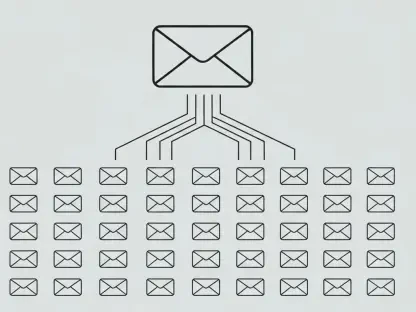The television industry is undergoing a seismic shift. With audiences consuming content across a myriad of digital platforms and devices, the once straightforward task of measuring TV viewership has become increasingly complex. The CIMM Study, conducted by the Coalition for Innovative Media Measurement, delves into these challenges and offers a roadmap for navigating this fragmented landscape.
The Evolution of TV Consumption
The Rise of Digital Platforms
As viewers migrate from traditional TV to digital platforms, the measurement of viewership has become more intricate. The proliferation of streaming services, mobile devices, and on-demand content has diversified how audiences engage with television. This shift necessitates new methodologies to accurately capture viewership data across these varied platforms.
The introduction of digital platforms has also altered the consumption habits of television audiences, making the landscape more complex. With viewers able to access their favorite shows on demand and across various devices, the time and place of TV viewing have become highly variable. This fragmented consumption behavior presents significant challenges for traditional measurement tools, which were designed for a time when television content was consumed in a more linear fashion. Therefore, adapting measurement techniques to align with this digital shift is paramount for accurate viewership insights.
Impact on Traditional Measurement Methods
Traditional methods of tracking TV viewership, such as Nielsen ratings, are struggling to keep pace with these changes. The fragmentation of the market means that a one-size-fits-all approach is no longer viable. Measurement vendors must adapt to the new reality by developing more sophisticated tools and techniques to track viewership across multiple devices and platforms.
The shift towards digital platforms requires a reevaluation of how to measure audience engagement effectively. Nielsen ratings, for instance, historically relied on a representative sample of households to gauge viewership trends across the nation. However, the rise of streaming services and the varied viewing habits they have fostered necessitate a more granular approach. Measurement vendors now need to employ intricate algorithms and data science techniques to piece together a comprehensive view of audience behavior that spans traditional TV and digital platforms.
Methodological Challenges in TV Measurement
Identity and Footprint Coverage Bias
One of the primary challenges identified in the CIMM Study is the accurate identification and tracking of viewers across multiple devices. This is crucial for reliable data but is complicated by the need to match identities across different platforms. Additionally, footprint coverage bias presents a persistent problem, as varying degrees of representation across datasets can skew results and create inconsistencies.
Accurately identifying viewers entails acknowledging the different devices a single user may employ to watch content. For example, a user might watch a TV show on their smart TV, continue on a tablet, and finish on a smartphone. This cross-device usage can muddy the waters of measurement accuracy if identities are not matched correctly across platforms. Footprint coverage bias further complicates this issue, as datasets may disproportionately represent certain demographic segments, leading to biased insights. Therefore, addressing these biases is critical to ensuring measurement tools can offer a true picture of TV viewership.
Onboarding, Cleansing, and Combining Big Data
The process of aggregating and refining data from disparate sources is fraught with difficulties. Measurement vendors use various data sources, and the task of ensuring accuracy through onboarding, cleansing, and combining these assets is significant. This challenge underscores the need for standardized practices and collaborative efforts to streamline data integration.
Onboarding data from different sources involves more than just gathering information; it requires a methodical approach to ensure all data points are accurately accounted for. Cleansing this data entails removing inaccuracies, redundancies, and inconsistencies to present a clear and reliable dataset. Combining data from various measurement vendors can be particularly challenging when different methodologies, platforms, and standards are involved. Therefore, standardizing practices across the industry and fostering collaborative efforts among vendors are essential for overcoming these hurdles efficiently.
Integrating Metadata and Streaming Data
Metadata Standards and Inconsistencies
Inconsistencies in metadata standards lead to diverse interpretations and outputs, complicating the measurement process. The CIMM Study recommends the establishment of a unified industry-accepted source and taxonomy to address these variations. This move would mitigate the inconsistencies brought about by different data collection methods and standards.
Metadata, which includes everything from show titles to episode numbers and air dates, is fundamental to measuring viewership accurately. However, varying standards for recording and interpreting this information can result in disparate outputs, complicating how data is analyzed and reported. Establishing a unified standard for metadata will help measurement vendors align their methodologies, ensuring that data analyses are consistent and comparable. This would entail developing a common language and taxonomy that can be adopted industry-wide, facilitating more transparent and reliable viewership metrics.
Blending Linear and Digital Streaming Data
Incorporating linear and digital streaming data seamlessly is essential for capturing the full spectrum of viewing habits. The blend of traditional and modern viewing habits must be accurately represented to provide a true picture of viewership. This integration is crucial for developing a comprehensive understanding of audience behavior.
The coexistence of linear and digital streaming presents a unique challenge for measurement metrics. While linear TV follows a set schedule, digital streaming allows for more flexible viewing options. Measurement tools must account for this blend, ensuring that traditional viewing habits and modern on-demand preferences are equally represented in the data. This may involve sophisticated data analytics techniques to seamlessly incorporate both types of data into a cohesive whole, ultimately offering a more nuanced understanding of how audiences engage with television content.
Addressing Coverage Gaps and Shortfalls
Ensuring Comprehensive Data Sets
Coverage gaps and shortfalls in data sets can lead to incomplete or misleading insights. Ensuring that data sets comprehensively account for all segments of the viewing audience is crucial. This requires a concerted effort from all stakeholders to push for metric standards that guarantee consistency, projectability, and interoperability.
A key aspect of addressing coverage gaps is ensuring that data includes all demographic groups and viewing habits. Partial data sets omit significant portions of the audience or fail to capture specific behaviors, leading to skewed results. Comprehensive data sets are essential for projecting trends and making informed decisions based on viewership data. This necessitates stakeholders working together to establish metric standards that ensure data consistency and interoperability, reducing the chances of misleading insights.
Collaborative Industry Efforts
The CIMM Study emphasizes the importance of a coordinated, industry-wide approach to overcome these challenges effectively. Collaboration among measurement vendors, publishers, networks, agencies, researchers, and marketers is key to developing shared assets and codifying best practices. This unified push is essential for accommodating shifts in media consumption and measurement methodologies.
Collaboration is highlighted as a cornerstone for navigating the complexities present in viewership measurement. By working together, various industry players can share insights, develop best practices, and establish common standards, which will benefit everyone involved. Joint efforts to codify measurement practices and develop shared assets could lead to more accurate and reliable insights, ultimately aiding the industry in adapting to the rapid changes in media consumption.
Future Directions and Recommendations
Unified Industry Standards
One of the most important recommendations from the CIMM Study is the need for unified industry standards. Establishing a common framework for metadata and measurement practices will help mitigate inconsistencies and ensure more reliable data. This move is crucial for stabilizing the measurement system in this transformative era.
Unified industry standards can serve as a linchpin for reliable TV viewership metrics. By agreeing on a common framework for metadata and measurement practices, the industry can ensure that insights are consistent, comparable, and trustworthy. This helps in stabilizing the measurement system, making it adept at handling the continual evolution in how audiences consume television content. This is especially important in an era where media consumption patterns are rapidly shifting from traditional linear formats to more fragmented digital platforms.
Validating Identities and Demographic Transactions
The future of identity and scoring to validate identities thoroughly is another critical recommendation. Ensuring that demographic transactions are as precise as possible will enhance the accuracy of viewership metrics. This requires the development of new quality parameters and the utilization of collective industry measures to refine measurement practices.
As the ways in which content is consumed become more varied, ensuring the accuracy of demographic transactions becomes vital. Thoroughly validating identities can significantly enhance the precision of viewership metrics, which in turn supports more relevant and effective marketing strategies. This demands new quality parameters aimed at refining how identities and demographics are tracked and scored. The study recommends collective industry efforts to develop these parameters, enhancing the reliability of measurement practices in this fragmented media landscape.
Conclusion
The television industry is experiencing a significant transformation. With audiences now consuming content across a variety of digital platforms and devices, measuring TV viewership has become notably more complicated than it once was. The task of tracking audience engagement, once straightforward, now requires navigating a complex web of data from multiple sources.
The Coalition for Innovative Media Measurement (CIMM) aims to tackle these modern challenges. Their recent study dives deep into the intricacies of the current landscape, identifying the difficulties and offering solutions for better measurement practices. This comprehensive study provides a thorough roadmap to help industry professionals understand and manage the fragmented viewership data. By exploring new methodologies and tools, the CIMM Study seeks to create a more cohesive approach to measuring TV audiences in our increasingly digital age.
Overall, the CIMM Study serves as a crucial guide for media professionals aiming to adapt to the evolving television landscape, ensuring that measurement techniques keep pace with the changing ways audiences engage with content.









